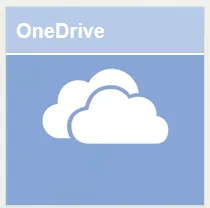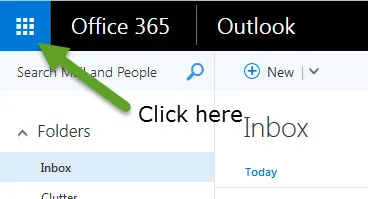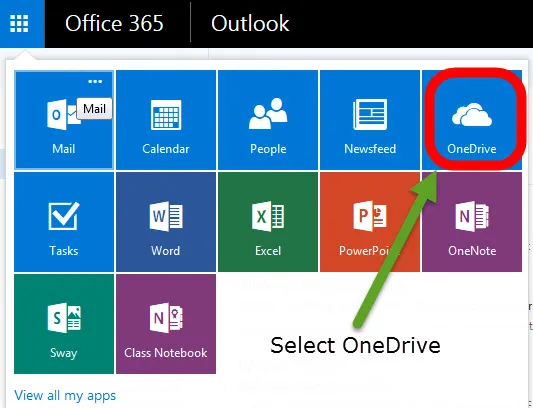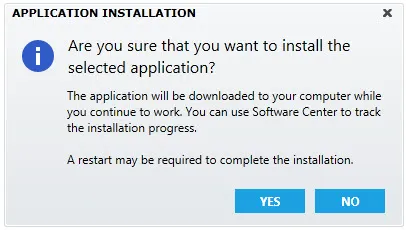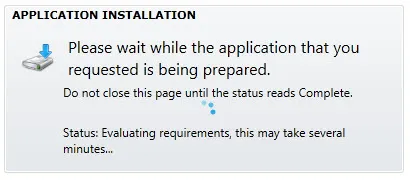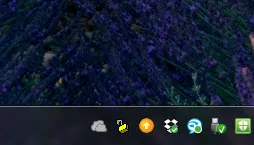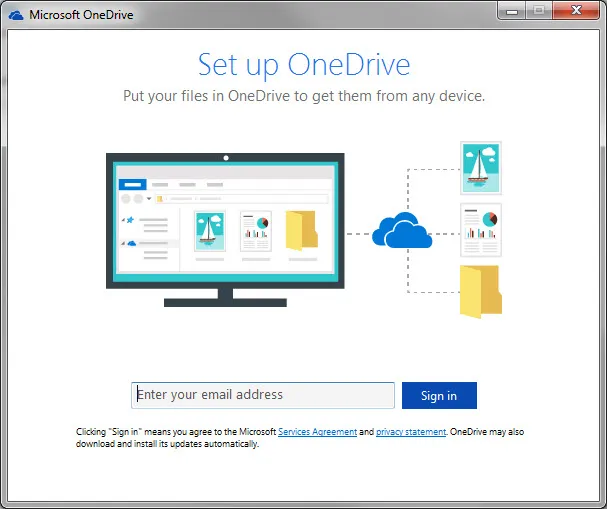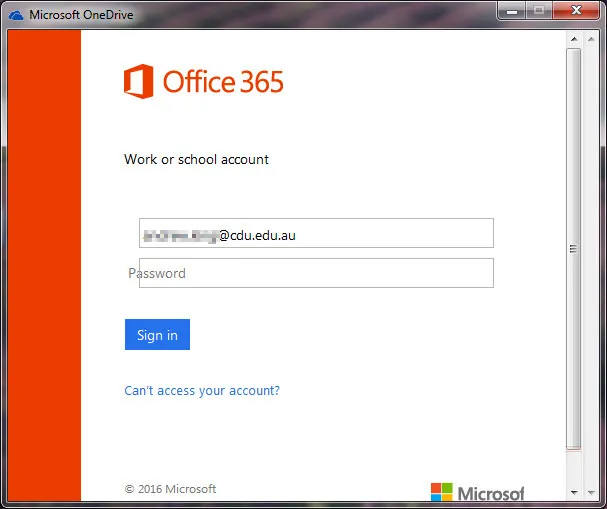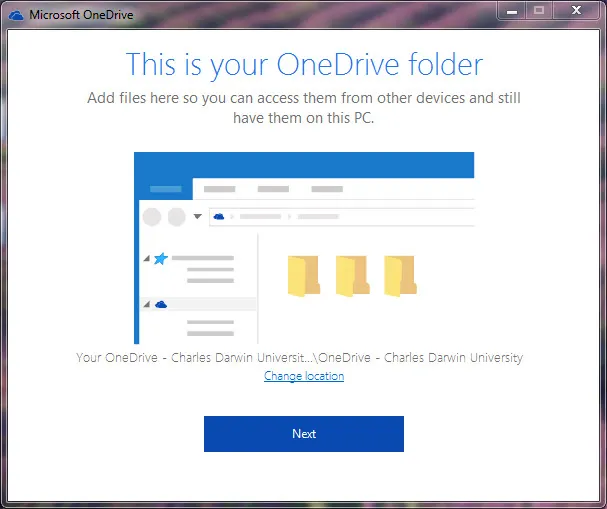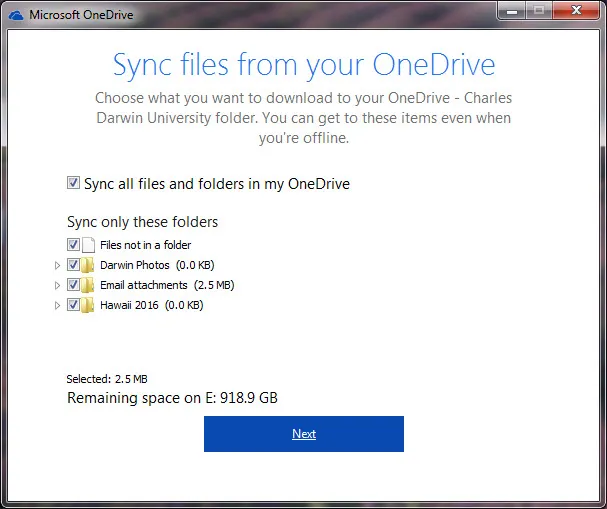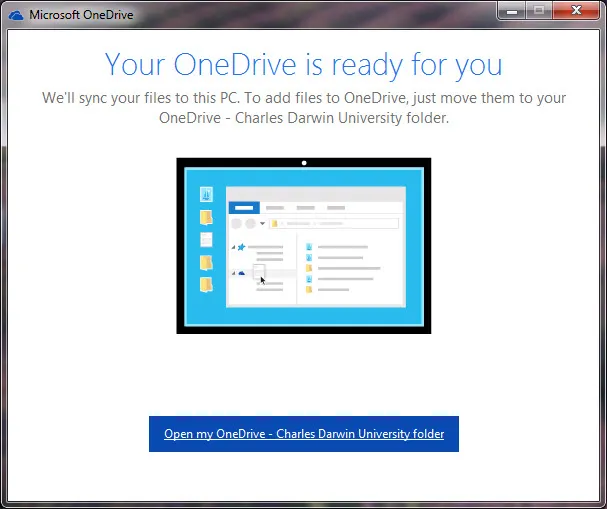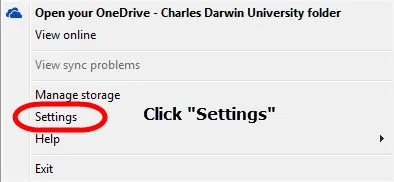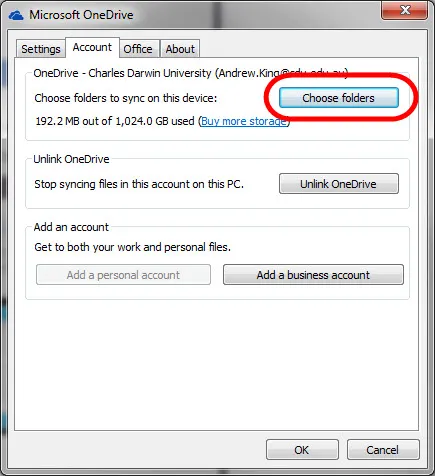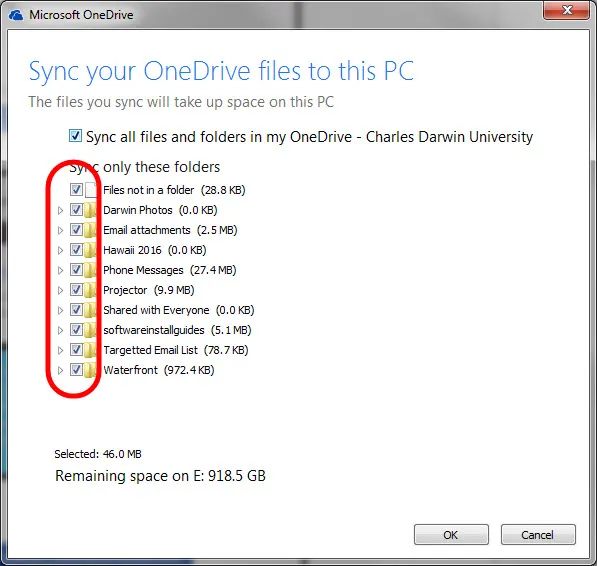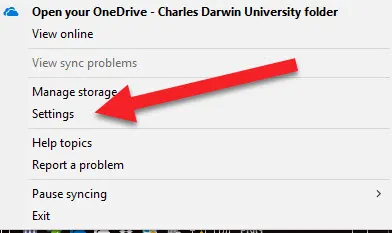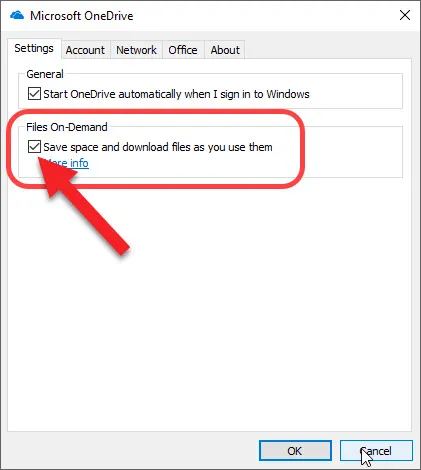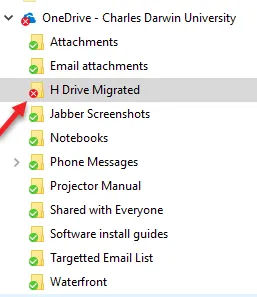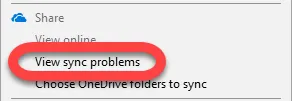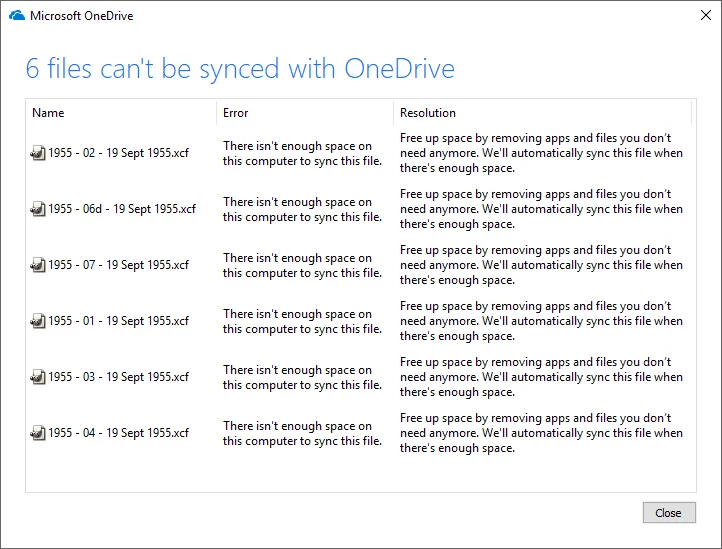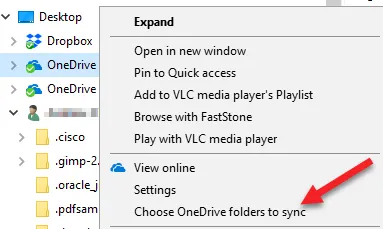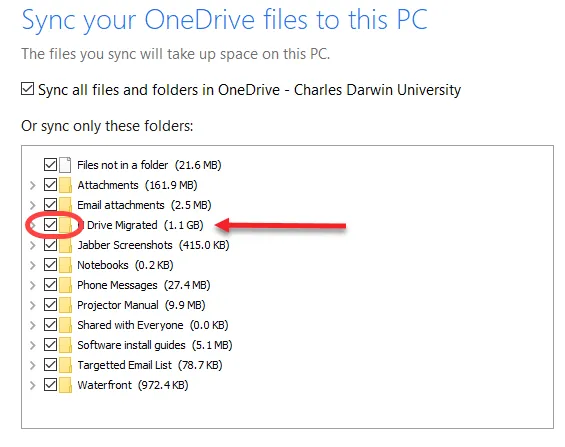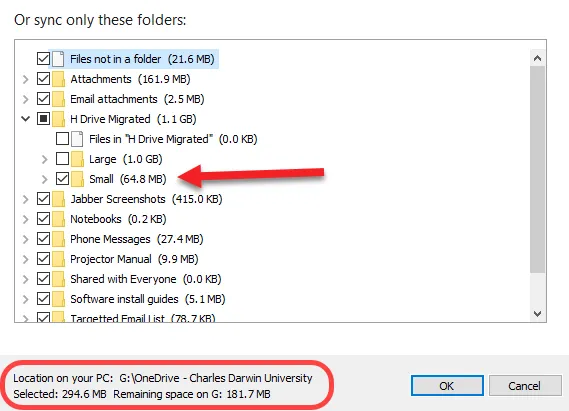OneDrive for Business explained
How to access OneDrive for Business
Access OneDrive via the Portal.
Students cannot link a CDU student computer to their personal OneDrive and will need to use the CDU Portal. (Sign in with your CDU email address).
There are three ways to access your documents and files in OneDrive:
- via the CDU Portal
- via Office 365
- via a Sync tool in Windows 7 or natively in Windows 10
(See the separate section below How to access the OneDrive Sync Client).
Access OneDrive via the CDU Portal
To go directly to OneDrive click portal.cdu.edu.au then click the OneDrive tile.
Access OneDrive via Office 365
Click the application icon.
Select OneDrive.
What does OneDrive for Business offer?
OneDrive for Business is a corporate alternative to using on-line storage alternatives such as Dropbox or Google Drive.
Benefits of using OneDrive for Business:
- Security: Online storage services are convenient for easy access to personal data over a variety of devices. However, they lack the security and encryption required to store corporate data. Data uploaded to OneDrive for Business is stored in Australia and has compliant security measures put in place to protect your content.
- Single sign on: OneDrive for business is a corporate tool. It will synchronise using your CDU credentials, which means that you will only need to remember the login details of your CDU account to be able to access your data.
- Size of storage: Unlike our network shares, OneDrive for business stores your data on the cloud. This means that you have access to five TB (5000GB) per user as opposed to the 500MB that you were previously provided with.
- Versatility: Using cloud technology, OneDrive for Business is accessible on a variety of platforms including but not limited to Apple devices, Android devices and Windows mobile devices.
Is OneDrive for Business secure?
When your data is in transit, it is encrypted as it moves between you, the data centre and between the server and the data centre. It uses 2048 bit encryption keys to protect it. The encryption technology applies, not only when the data is moving between servers or data centres, but also when the data is at rest.
When data is at rest in the data centre there are two types of encryption used, disk encryption and file encryption:
- at the disk encryption level, BitLocker is used to secure data.
- at the file encryption level, every file is secured with its own key that uses Advanced Encryption Standard (AES) with 256-bit keys and is Federal Information Processing Standard (FIPS) 140-2 compliant.
For a more detailed explanation, please refer to Microsoft's explanation of the Security surrounding OneDrive for Business.
What should I store in OneDrive for Business?
Your OneDrive for Business should be thought of as your 'home drive' and used to store your own data or as a working area for unreleased CDU data.
Staff
Once work has been completed or finalised, it should be moved to the appropriate area on the corporate drives. OneDrive should not be used for the permanent storage of CDU business data.
Students
The U:\ drive service will soon cease to be offered and students will solely use OneDrive.
Please note: Your account/access ceases along with employment/enrolment. Once your account with CDU (staff/students) ends, your OneDrive for Business account and associated data will be removed. It will be your responsibility to make sure that you have a copy of your files prior to your leaving, as once removed these files can no longer be recovered by CDU.
How do I install the OneDrive for Business application on a mobile device?
Microsoft OneDrive for Business is also offered on most smart devices.
What are OneDrive for Business limitations?
These are Microsoft imposed limitations. If any of these file types are critical to your work, study, or research, please let us know and we will work with you to determine the best solution.
There are certain types of file extensions that cannot be uploaded to OneDrive for Business:
- *.tmp
- *.ds_store
In addition to this, OneDrive for Business will not accept any files with these characters in the filename:
" # % * : < > ? / \ |
Where can I find further help on using OneDrive for Business?
As OneDrive for Business is a Microsoft product, Microsoft provides plenty of training information. See below for some links to get you started.
- What is OneDrive for Business?
- Share files in OneDrive for Business
- Store files in OneDrive for Business
- Share documents or folders in Office 365
LinkedIn Learning
LinkedIn Learning has a "OneDrive for Business Essentials" course which last 54 minutes and 16 seconds.
You can watch the entire course or just the short video you need.
Topics include:
- signing in to OneDrive
- syncing OneDrive
- working with OneDrive via the web or the client app
- uploading files and folders
- renaming, copying, downloading, and deleting files
- using OneDrive with Microsoft Office
- sharing files
- working on files simultaneously with co-workers.
How to use the OneDrive Sync client
OneDrive Sync Client can be installed on both staff computers or personal home computers to keep a set of folders (which you decide) synchronised with the corresponding set in OneDrive.
How do I install the OneDrive for Business Sync client on a CDU Staff PC?
Installation
- OneDrive Sync client cannot be installed on CDU Student computers
- Windows 10 computers come with OneDrive built-in. You only need to connect Windows 10 to your OneDrive account.
1. Open Software Center and search for OneDrive then click the install button.
Win7 - Start Menu > All Programs > Software Center
Win10 - Start Menu > Software Center
2. Click Yes when it asks if you are sure you want to install the application.
3. Wait for the application to download and install.
4. Once installed a cloud will appear on your taskbar.
5. You will also get two folders to appear in your favourites.
The OneDrive - Charles Darwin University is the five TB storage available from CDU.
The OneDrive - Personal is if you have signed up for a personal OneDrive and is not related to CDU.
6. On the location where these are stored you will see.
Please note: The personal folder does not have Personal appended to the name.
How do I install the OneDrive for Business application on my Windows PC?
If you are running Windows 10 or Office 2016, or if you’ve signed into the OneDrive sync client with a Microsoft account (for example, someone@outlook.com), skip to Get started in Windows.
If you are running Windows 8.1, Windows 8, or Windows 7, Install OneDrive, and then read Get started in Windows.
How do I install the OneDrive for Business application on my Mac?
The Mac OneDrive Sync Client is available here.
Supported Operating System is Mac OS X 10.9 and higher.
How do I connect my OneDrive Sync client to my OneDrive?
Once installed (as above) you then need to connect the Sync Client to your OneDrive for Business account:
1. Type your CDU email address and click Sign in.
2. You will then be taken to Office 365 to sign in.
3. Office 365 will recognise you are at CDU and redirect you to the CDU login. Type in your CDU email address and password then click "Sign in"
4. Click Next
At this point, you can change the location that the OneDrive Sync client will use on your local computer. This needs to be an empty folder on the drive you have selected.
If you have a second hard drive or an external hard drive you can use this. You cannot use a network location such as your H drive.
5. Next you will be asked to choose which folders on your OneDrive for Business you want to sync to your computer.
You can also see how much free space is available on the location you choose above earlier.
(Probably your C: drive, the example below is an external hard drive E:)
Click Next
6. Your OneDrive for Business Sync client is now ready to use.
How do I change what folders and files are sync'd by the OneDrive Sync client?
To change what is sync'ed to your computer do the following:
1. Right click on the blue cloud on the Taskbar.
2. Select Settings.
3. Select "Choose folders".
4. Remove or add a tick to the folders you wish to be removed or added to the sync with OneDrive.
How can I restore files that are accidently deleted?
If you accidently delete files on your OneDrive Sync folder a copy is moved to the recycle bin on your local computer. The copy on OneDrive is moved to the OneDrive recycle bin and is keep there for 30 days.
If you empty the recycle bin on the local machine the copy in the OneDrive recycle bin still remains.
The OneDrive recycle bin can be accessed from the OneDrive web interface.
What do the icons mean in the OneDrive Sync client?
Reasons why you might get the red cross are:
- The file name is not compatible with OneDrive. OneDrive does not allow the following characters in file names " # % * : < > ? / \ |.
- There is not enough space on the computer's hard drive to synchronise a file (or files) in OneDrive on the local computer. (See below "What happens if there is more data on OneDrive than I have space on my computer to synchronise?" to fix this problem).
Files on-demand in Windows 10
How do I get Files on-demand?
If you have Windows 10, but not the most recent, you can go to the Software Catalog and install it yourself on your Windows 10 computer.
Enable files on-demand
To enable Files on-Demand you need to turn it on.
Right Click your cloud icon on the Taskbar and choose Settings.
Choose the Settings Tab and tick Files on-demand and then OK.
What does Files on-demand give me in addition to the standard OneDrive Sync client?
Files on-Demand gives you much better control of where your files live and in what state they are in, which can save a lot of space on your hard drive.
Previously your files were either on your computer or they weren't. When you made a change to a file and saved it, the Sync client copied the changed file back to OneDrive. You only had control of if a folder (and the files it contained) was on your computer or not.
With Files on-Demand you can still control which folders and files are on your computer, but now you can specify three states for those files.
Online Only - the file is on OneDrive but only a shortcut to the file is on the local computer. When you open the file it is then downloaded to the local computer and the icon is changed to the locally available icon which is a green tick in a green circle with a white background. If you right-click the file and select "Always keep on this device" it will change to the "Always available" icon.
Locally available - the file is both on the local computer and in the cloud. This is only because you have accessed it and not because you have specified it should reside on the local computer. If you tell Files on-Demand to free up space the file will be replaced by a cloud shortcut and it will need to be downloaded the next time it is accessed.
Always available - The file is on both the local computer and in the cloud. However, if you tell Files on-Demand to free up space the file will not be touched and will remain on the local computer unless the file is itself selected in which case it will turn to the Online Only icon. This is indicated by a white tick in a solid green circle. This would be useful if you had a laptop and need to work on files without access to the internet. Any updates you make offline will still be synchronised once the computer is connected back to the internet.
Updating Icon - The file is in the process of changing state.
What happens if there is more data on OneDrive than I have space on my computer to synchronise?
If your computer has the Windows 7 Sync Client (or is Windows 10) set to synch all files on OneDrive to your local computer and you don't have space for all the files located on OneDrive. The sync client will start to sync the files that have been added until it runs out of space on the C Drive. It will then display a message on your computer in the bottom right corner of the screen.
The OneDrive folder that was not able to be sync'd will show a red cross.
When you right click the OneDrive a new menu option will be available "View sync problems".
Note: If you have had a large number of files added to OneDrive it would be advisable to not bother with this option as it will be a very long list.
Below is an example of "View sync Problems"
This shows the files that were not able to be synced.
How to fix this problem
Right-click on your OneDrive folder located on your computer and select "Choose OneDrive folders to sync".
Deselect the folder that was having problems syncing due to size.
(Note It could be any folder that frees up enough space if you wanted)
OneDrive is now in sync minus the folder that was too large.
While it may not be possible to add the folder that was too large in it's entirety. You may be able to add some of the subfolders that are not too large.
At the bottom of the window, the client details how much space the folder you wish to sync will take up on your computer.
All campuses contacts
We are your first point of contact for assistance with computers, the internet, telephones, printers and associated information technology equipment and services.
Service Desk
T: 08 7943 6600
Internal: Ext 6600
International:
+618 7943 6600
Opening hours
Mon - Thu: 7:30 am - 6.00 pm
Friday: 7.30 am - 5.30 pm
In-person (kiosk)
CDU Library, Red Building 8, Casuarina campus
Casuarina campus map (PDF, 1.19 MB)
Feedback
DTS would love to hear from you.
Provide feedback
